
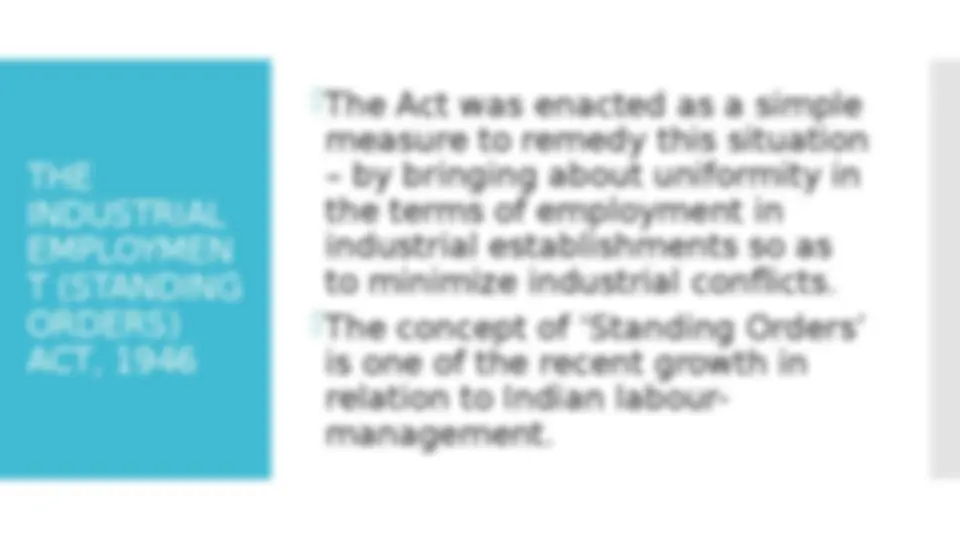
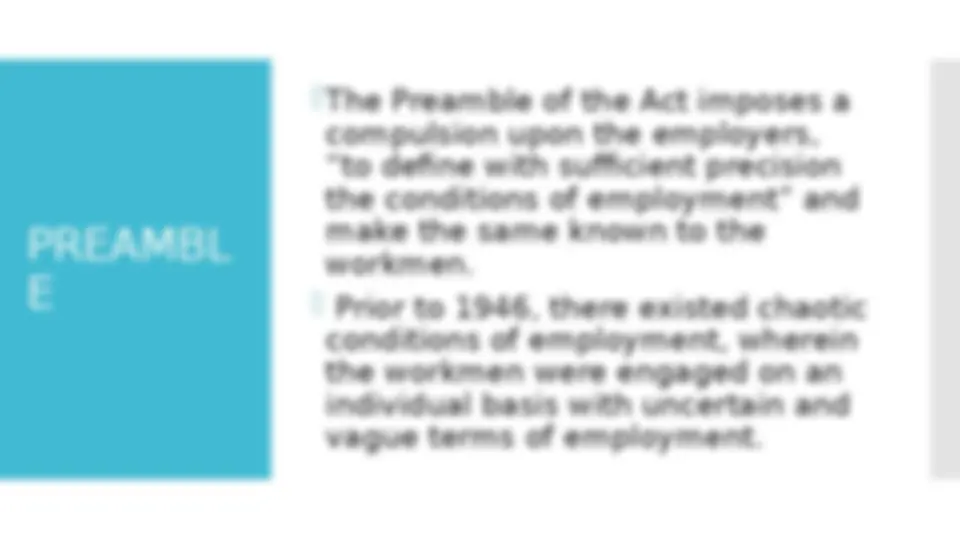
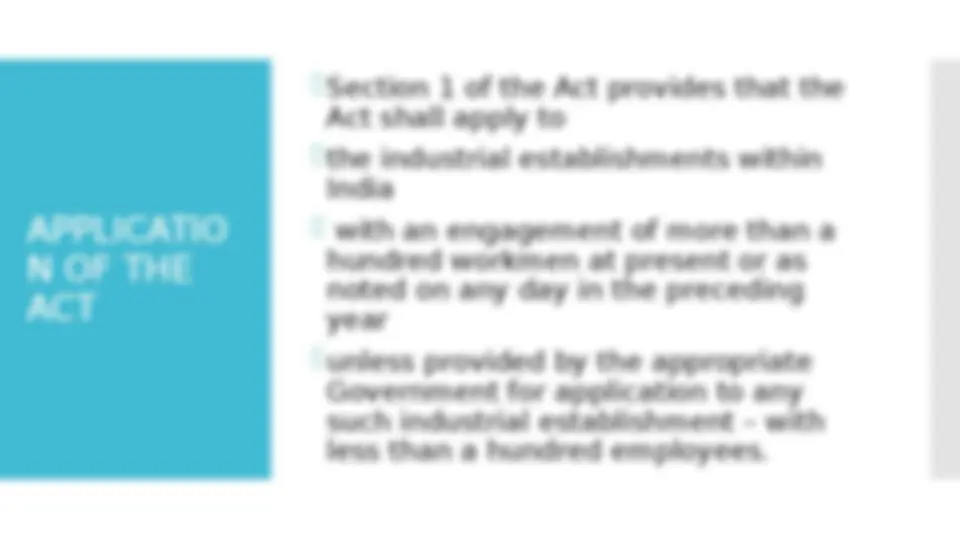
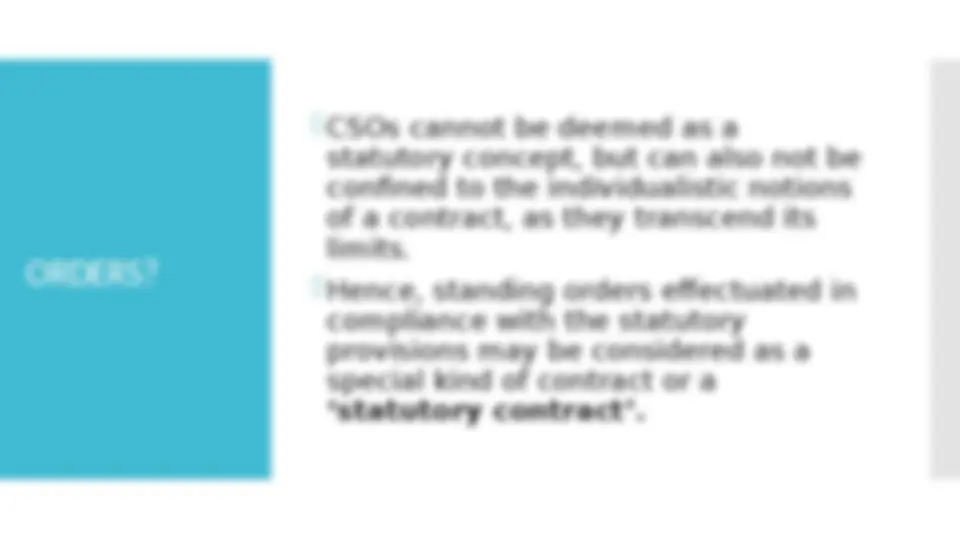
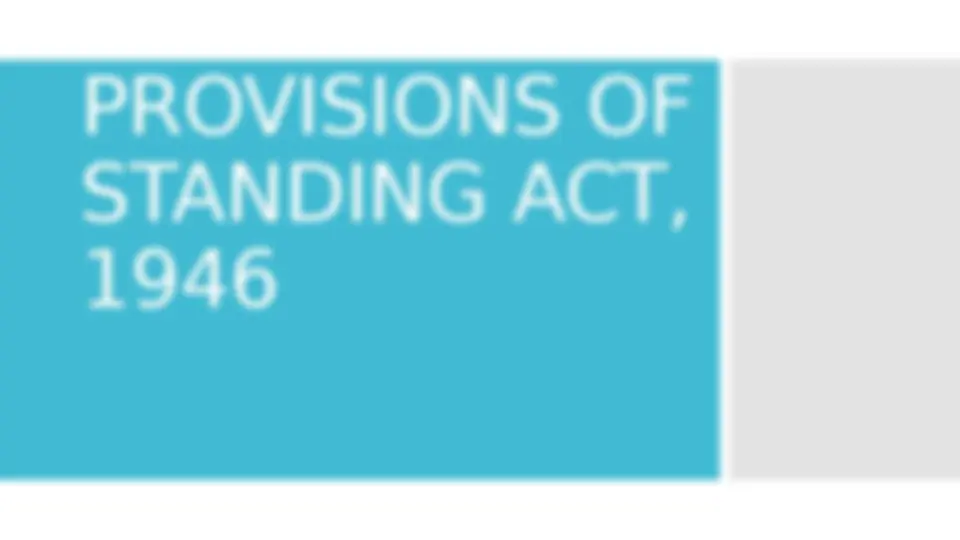

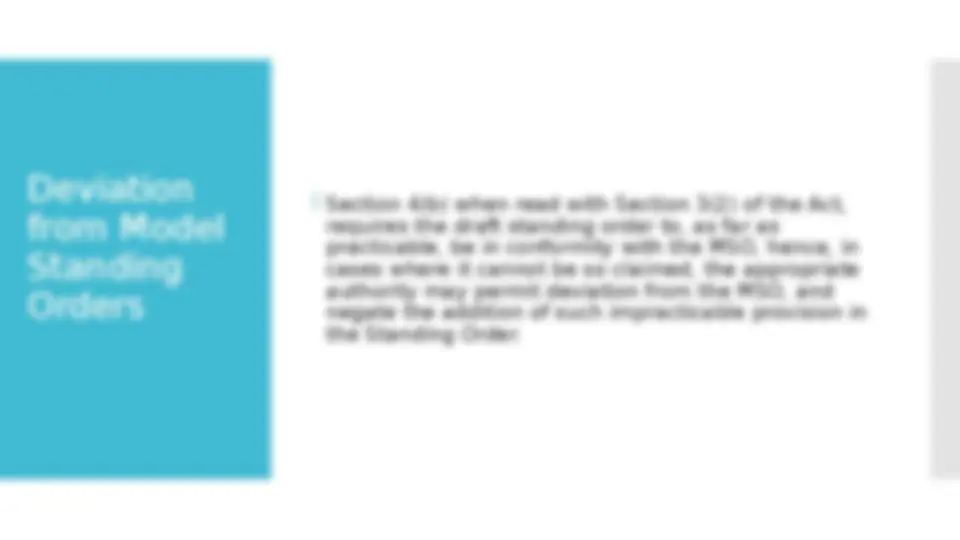
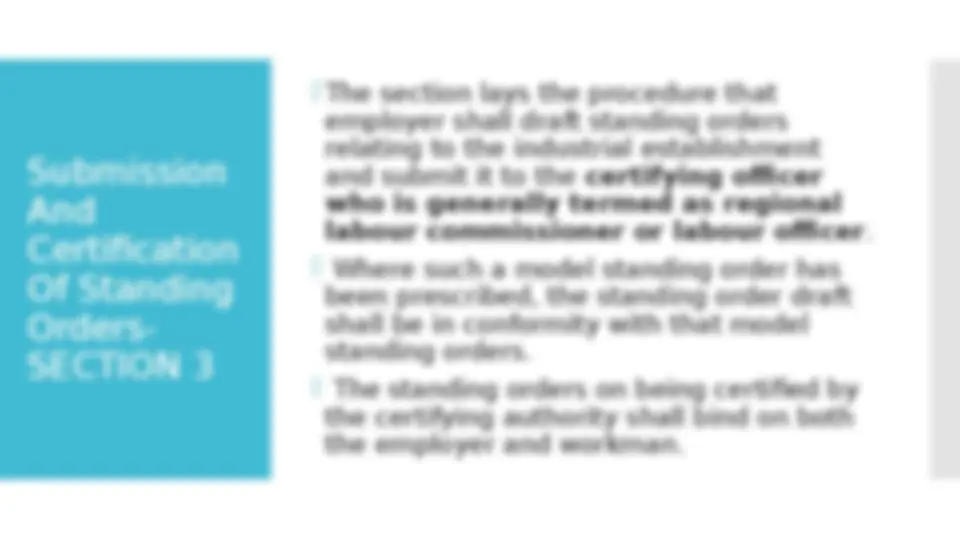
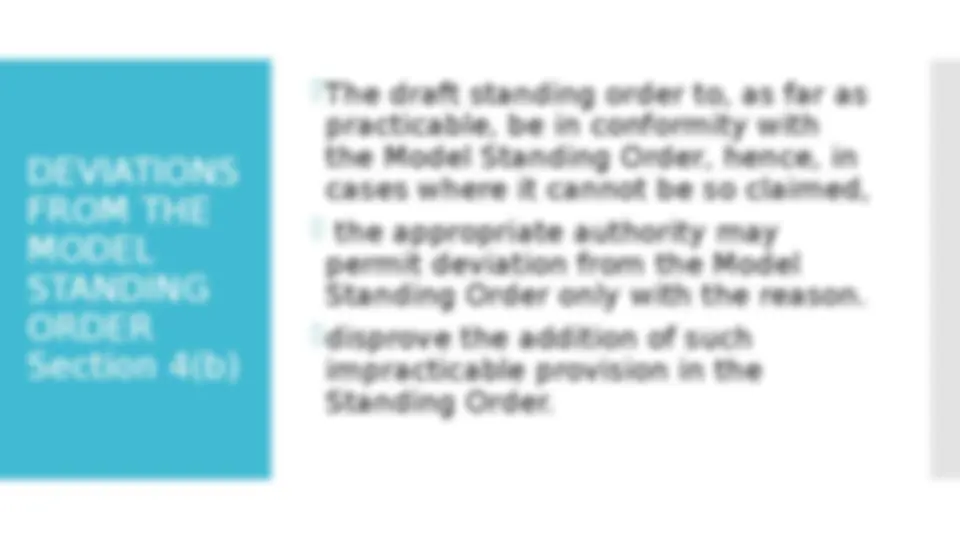
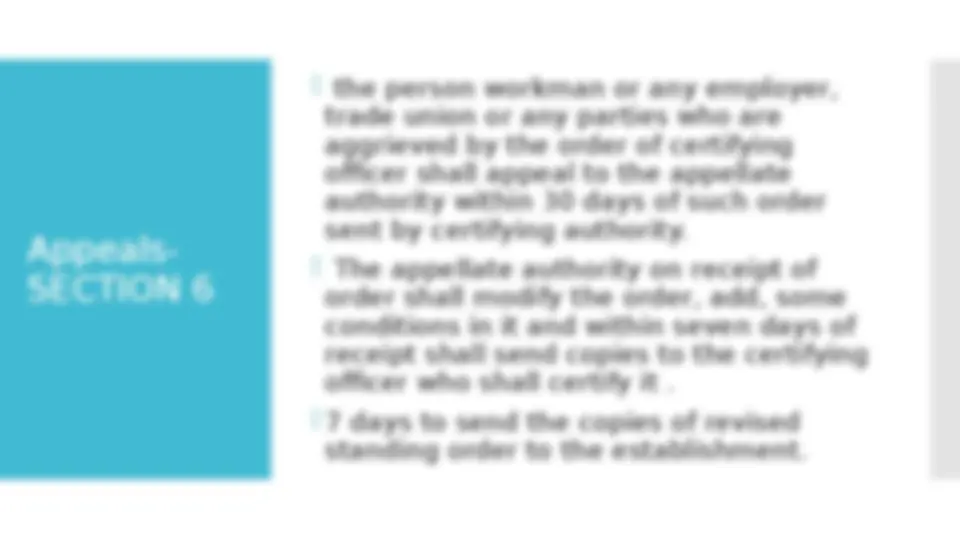
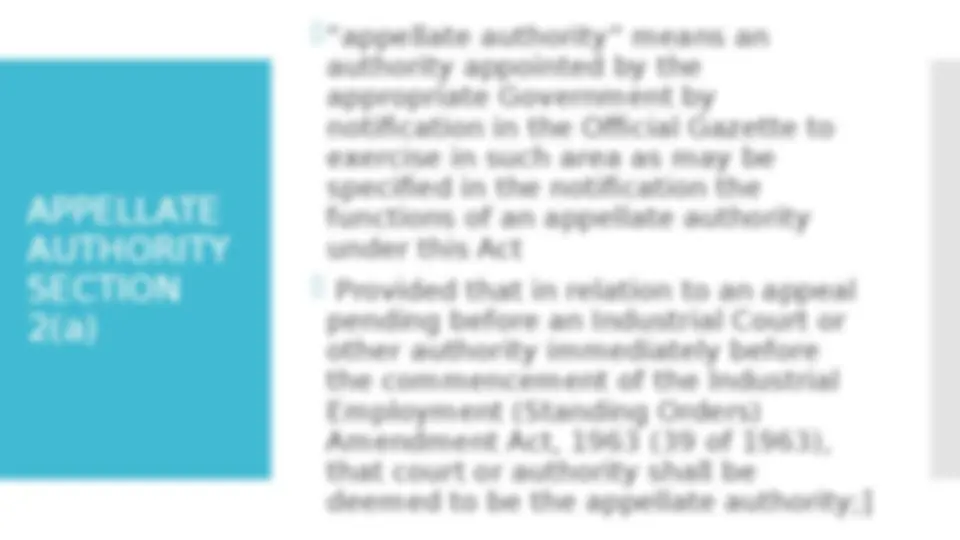
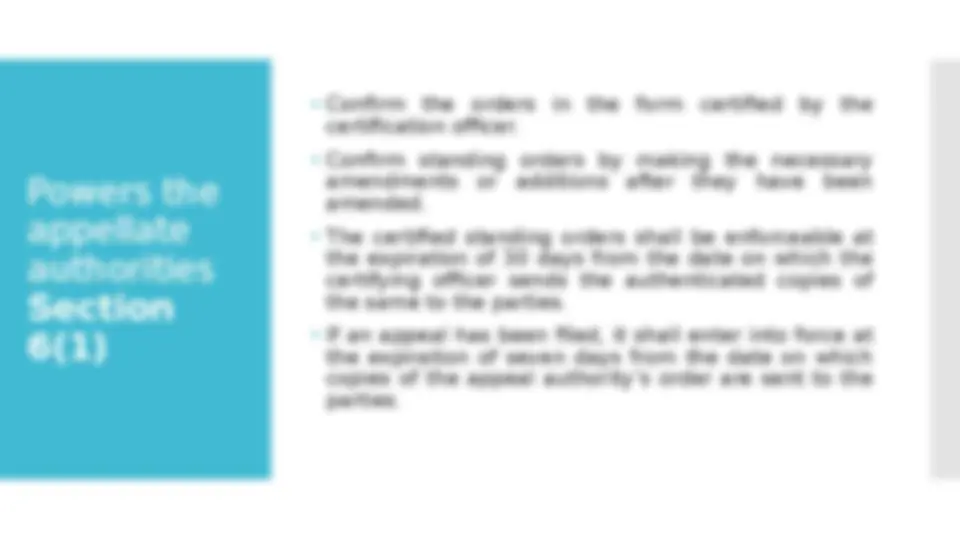
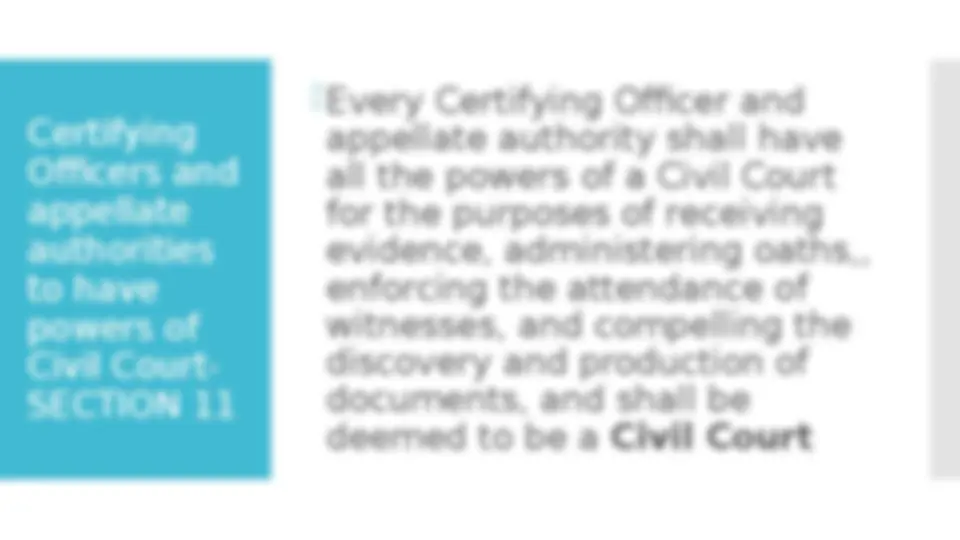
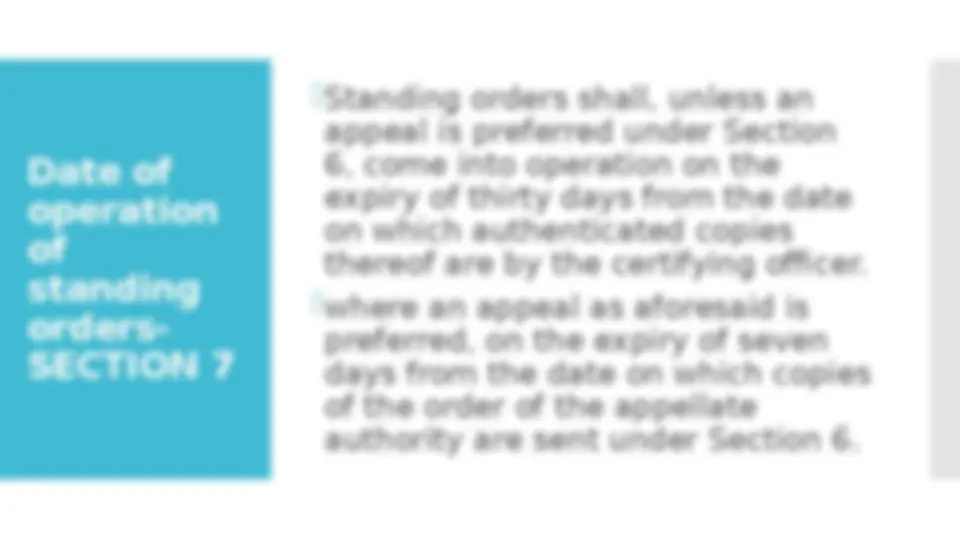
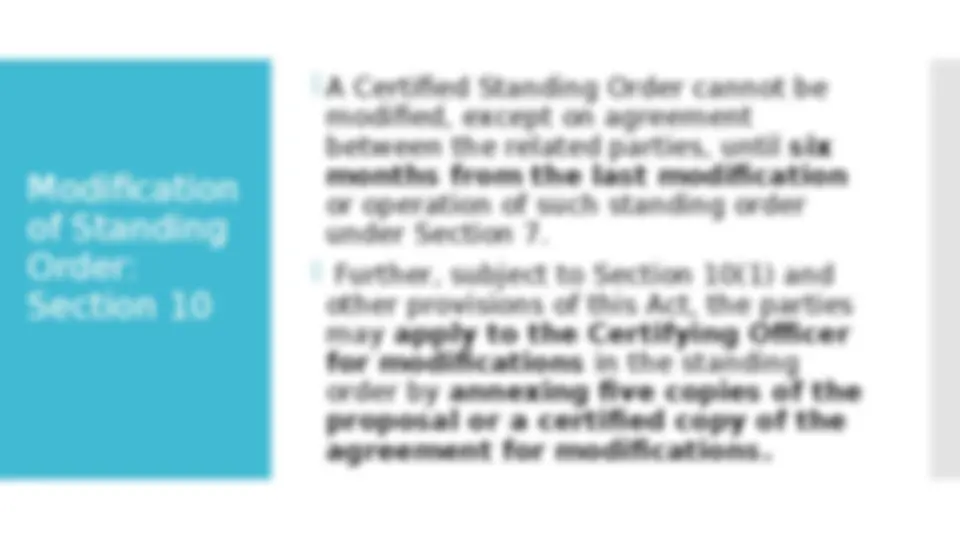
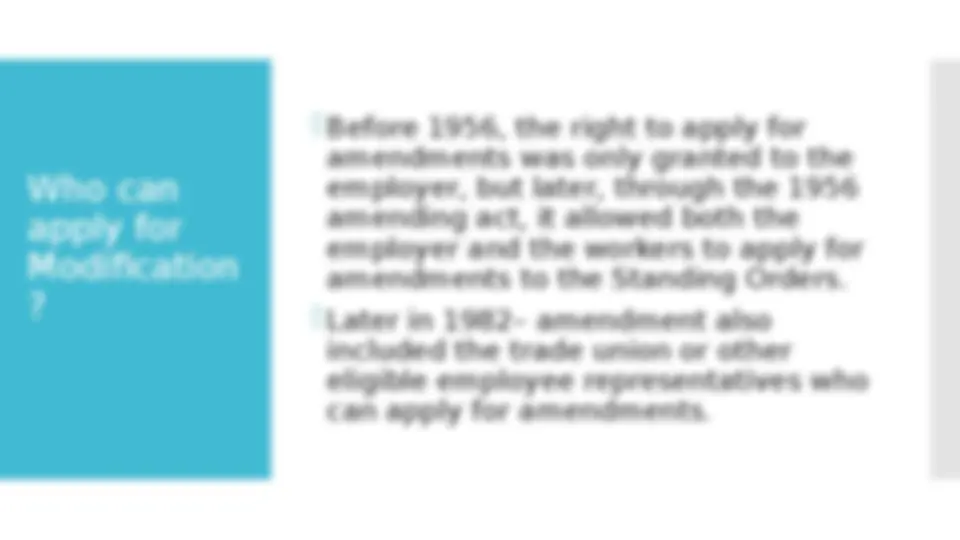
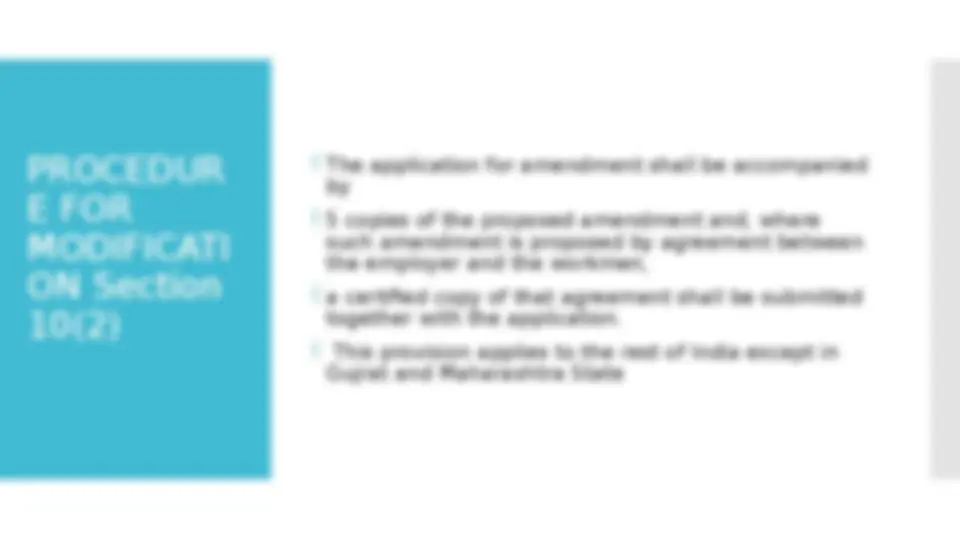
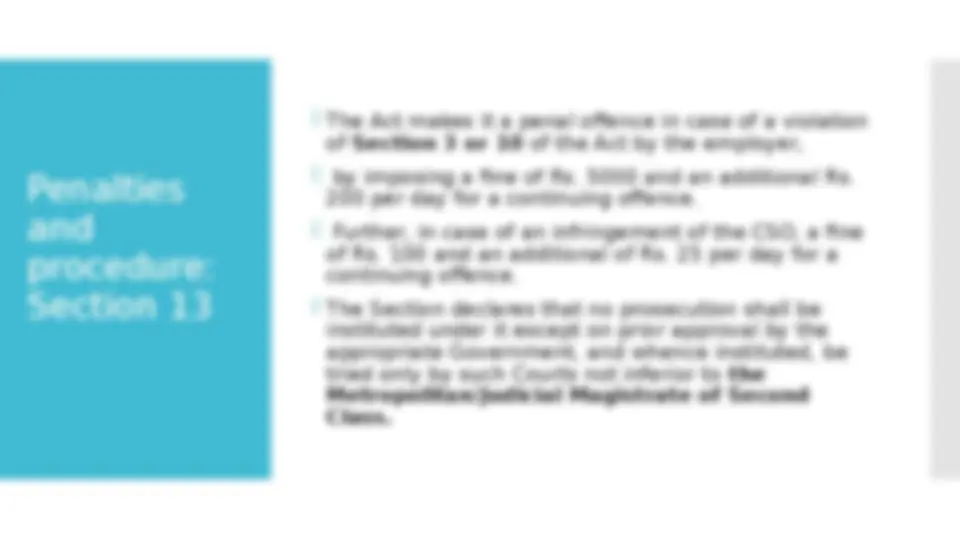
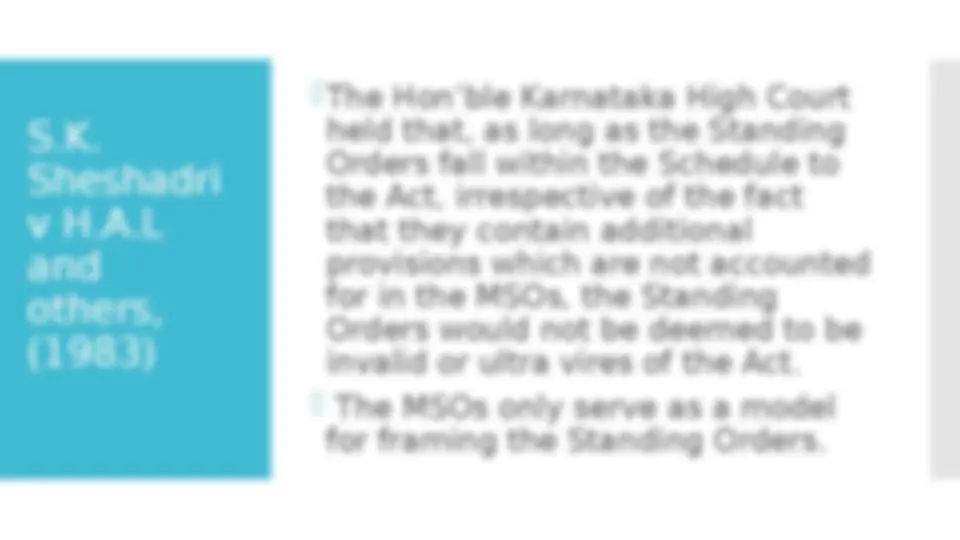
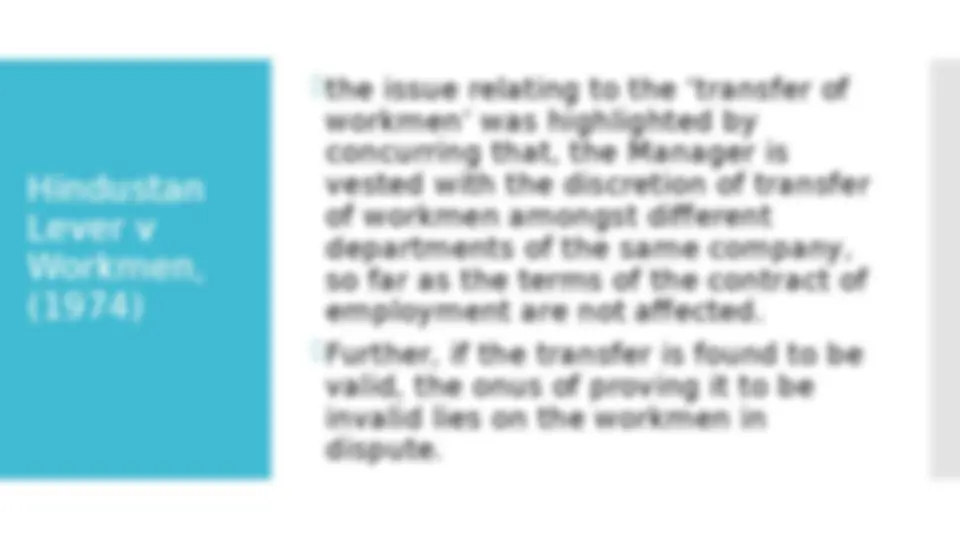
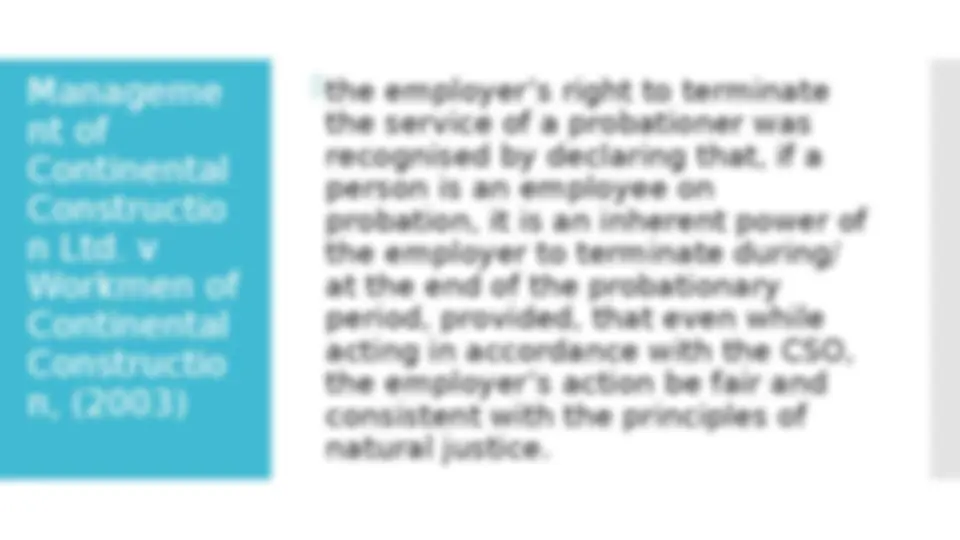
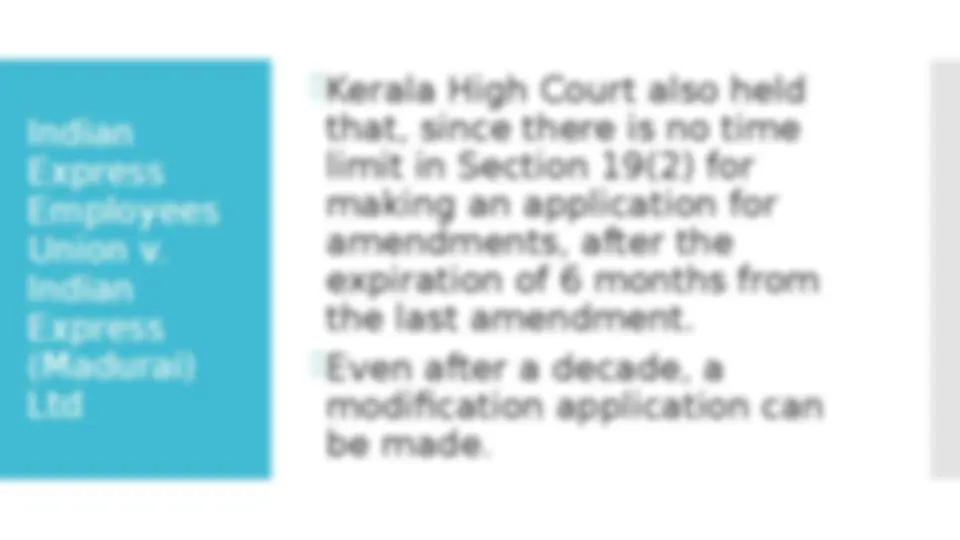


Study with the several resources on Docsity

Earn points by helping other students or get them with a premium plan


Prepare for your exams
Study with the several resources on Docsity

Earn points to download
Earn points by helping other students or get them with a premium plan
Community
Ask the community for help and clear up your study doubts
Discover the best universities in your country according to Docsity users
Free resources
Download our free guides on studying techniques, anxiety management strategies, and thesis advice from Docsity tutors
Ppt on the STANDING ORDERS ACT
Typology: Slides
1 / 30

This page cannot be seen from the preview
Don't miss anything!























PRAGADI LOKESH
132002097
Rules and forms regulating the
procedure framed by a Legislature
or The Parliament.
Rules framed mutually agreed by
the employer and the employees
pertaining to working agreement
about the classification of workmen,
leaves payment of wages on certain
dates, advances, retirement ,
misconduct late commings,
disciplinary actions, etc.
The Preamble of the Act imposes a
compulsion upon the employers,
“to define with sufficient precision
the conditions of employment” and
make the same known to the
workmen.
Prior to 1946, there existed chaotic
conditions of employment, wherein
the workmen were engaged on an
individual basis with uncertain and
vague terms of employment.
Section 1 of the Act provides that the
Act shall apply to
the industrial establishments within
India
with an engagement of more than a
hundred workmen at present or as
noted on any day in the preceding
year
unless provided by the appropriate
Government for application to any
such industrial establishment – with
less than a hundred employees.
All the industrial establishment
should send a copy of the
standing order.
Based on the model standing
order
Certifying Officer shall review the
rules and regulations
Rejects
Certifies and comes with the
force of law
CSOs cannot be deemed as a
statutory concept, but can also not be
confined to the individualistic notions
of a contract, as they transcend its
limits.
Hence, standing orders effectuated in
compliance with the statutory
provisions may be considered as a
special kind of contract or a
‘statutory contract’.
Section 2(g) of the Act states that “standing
orders” are the rules relating to matters set out
in the Schedule, i.e. with reference to:
wage-related details;
etc.;
certain circumstances;
employment; and
matter.
Submissio
n of Draft
Standing
Orders:
Section 3
A statutory obligation is imposed
by the Act upon the employer(s)
to submit, individually/ jointly,
five copies of a ‘Draft Standing
Order’
within six months of its
applicability to the industrial
establishment, which should be
inclusive of the matters enlisted
in the Schedule and of the MSOs
(short for – Model Standing
Orders), if any, and to which shall
be annexed such documents
containing particulars of the
workmen employed.
Section 4(b) when read with Section 3(2) of the Act,
requires the draft standing order to, as far as
practicable, be in conformity with the MSO, hence, in
cases where it cannot be so claimed, the appropriate
authority may permit deviation from the MSO, and
negate the addition of such impracticable provision in
the Standing Order.
The section lays the procedure that
employer shall draft standing orders
relating to the industrial establishment
and submit it to the certifying officer
who is generally termed as regional
labour commissioner or labour officer.
Where such a model standing order has
been prescribed, the standing order draft
shall be in conformity with that model
standing orders.
The standing orders on being certified by
the certifying authority shall bind on both
the employer and workman.
Reasonablen
ess of
Standing
Order
The certifying officer.
All the industrial establishment should
send a copy of the standing order.
Based on the model standing order
Certifying Officer shall review the rules
and regulations
law
Standing Order to the workmen or trade union,
along with a notice calling for objections, that
shall be submitted to him within 15 days of
receiving such notice.
employment.
and workmen to be given an opportunity of
being heard, after which the Certifying Officer
shall decide and pass an order for modification
of the Standing Order.
Standing Order, and thereby, within seven days,
send a copy of it annexed with his order for
modification passed under Section 5(2).
“appellate authority” means an
authority appointed by the
appropriate Government by
notification in the Official Gazette to
exercise in such area as may be
specified in the notification the
functions of an appellate authority
under this Act
Provided that in relation to an appeal
pending before an Industrial Court or
other authority immediately before
the commencement of the Industrial
Employment (Standing Orders)
Amendment Act, 1963 (39 of 1963),
that court or authority shall be
deemed to be the appellate authority;]
certification officer.
amendments or additions after they have been
amended.
the expiration of 30 days from the date on which the
certifying officer sends the authenticated copies of
the same to the parties.
the expiration of seven days from the date on which
copies of the appeal authority’s order are sent to the
parties.